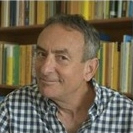Fermat’s Last Theorem

Kenneth Ribet
加州大学伯克利分校数学系教授
美国数学协会主席
Ribet教授曾就读于布朗大学和哈佛大学。1973年,他从哈佛大学博士毕业,那时他的导师是JohnTate。在普林斯顿大学授课三年以及在巴黎进行了两年研究之后,他于1978年加入了伯克利大家庭。Ribet教授研究的方向是数论以及代数几何。他因证明了费马大定理在逻辑上遵循模块化猜想以及一个未被证明的关于椭圆曲线的猜想而知名。因为Ribet先前的工作,所以当Andrew Wiles在1995年证明了这个猜想之后,他发现费马大定理是这个猜想的一个推论。Ribet教授是大量系列书籍以及研究期刊编辑部的成员。他在1997年被推选到美国艺术科学学会,在2000年被推选到美国国家科学院。他在1989年荣获费马奖并在1998年获得了布朗大学的荣誉博士学位。2017年,他获得了荷兰皇家数学院的布劳威尔奖章。在1988年,Ribet接受了授勋仪式,正式就任圣埃美隆汝拉德骑士团。他分别于在1985年和2013年获得了数学系的杰出教学奖。
Kenneth Ribet is Professor of Mathematics at the University of California, Berkeley and the President of the American Mathematical Society. Ribet studied at Brown University and Harvard University. He received his PhD in 1973 from Harvard, where his advisor was John Tate. After three years of teaching in Princeton and two years of research in Paris, Ribet joined the Berkeley faculty in 1978.Ribet works in number theory and algebraic geometry. He is best known for his proof that Fermat's Last Theorem would follow logically from the modularity conjecture, then a well-known unproved conjecture about elliptic curves. When Andrew Wiles obtained cases of this conjecture in 1995, Wiles obtained Fermat's Last Theorem as a corollary because of Ribet's prior work.Ribet is a member of the editorial boards of numerous book series and research journals. He was elected to the American Academy of Arts and Sciences in 1997 and the US National Academy of Sciences in 2000. He was awarded the Fermat Prize in 1989 and received an honorary PhD from Brown University in 1998. He received the Brouwer medal from the Royal Dutch Mathematical Society (KWG) in 2017.Ribet was inducted as a Vigneron d'honneur by the Jurade de Saint Emilion in 1988. He received his department's Distinguished Teaching Award in 1985 and again in 2013.
内容简介
一是阐释费马大定理及定理证明的早期尝试及部分成果;二是讲述Wiles和Taylor-Wiles费马大定理的证明过程;三是讲述部分现代数学模型在费马大定理证明中的运用。
The first part of this talk will explain the statement of Fermat's Last Theorem and sketch out early attempts to prove the theorem and partial results in the direction of the theorem.
The second part of the talk will narrate how the theorem came to be proved in 1995 by Wiles and Taylor-Wiles.
In the third part of the talk the speaker will describe some of the structures of modern mathematics that intervened in the proof.